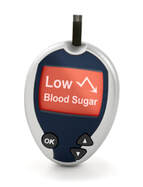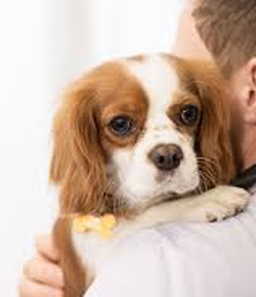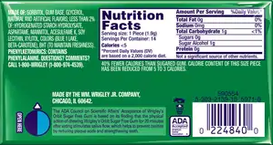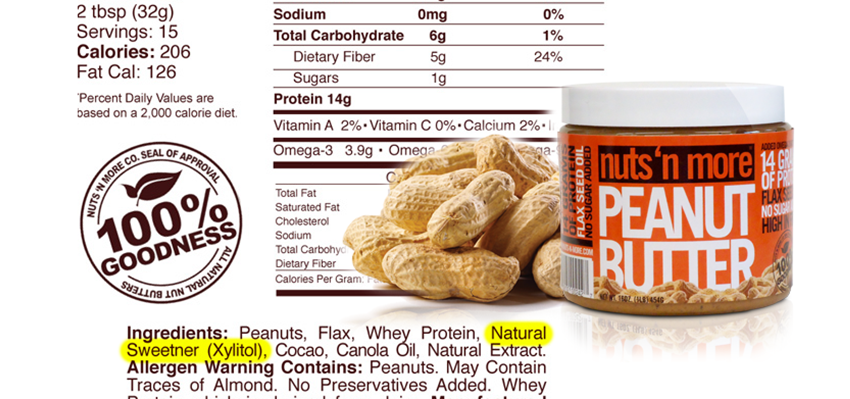|
Post by: Dr. Nancy Kay, DVM, DACVIM Dog Toxins & PoisonsFor some folks, the start of a new year is a catalyst to lose weight and this may mean switching from plain old sugar to lower calorie sweeteners. Xylitol is one such sugar substitute that is safe for human consumption, but is toxic for dogs. In fact, it can be deadly.
Additionally, compared to sugar, it causes very little insulin release in people and insulin is not required for it to be put to use as an energy source for the body. Lastly, xylitol has been shown to prevent mouth bacteria from producing acids that damage the surfaces of the teeth. For this reason, xylitol is commonly included in toothpastes, sugar-free gum, and other oral care products.
Xylitol Toxicity in dogs After a dog consumes a significant amount of xylitol, there is a massive release of insulin from the pancreas. This, in turn, results in a dangerously low blood sugar level and symptoms such as weakness, trembling, seizures, collapse, and even death. At higher dosages, xylitol can cause massive liver destruction (known as necrosis) in which large numbers of liver cells die abruptly. This produces an acute health crisis and, in many cases, death. Vomiting is often the first symptom of xylitol toxicity. Other symptoms related to the low blood sugar level develop within 30 minutes to 12 hours following consumption. When xylitol-induced liver damage occurs, blood liver enzyme values typically begin increasing within 12 to 24 hours. The dose of xylitol considered to be toxic for dogs is 0.1 gram or more of xylitol per kg of the dog’s body weight. What about cats and xylitol? While xylitol ingestion in cats does cause a drop in blood sugar, this rarely happens. This is because, unlike dogs, most kitties have very discriminating palates- they don’t choose to eat products containing xylitol.
The prognosis for xylitol toxicity varies and depends on how promptly the dog receives treatment as well as the amount of xylitol that was consumed.
Believe it or not, some products advertised specifically for dogs, such as toothpaste, contain small amounts of xylitol! What are these manufacturers thinking?!
Not all product labels clearly state if they contain xylitol. If a label states only, “artificially sweetened,” presume that it contains xylitol. If you opt to use xylitol-containing products in your household, be sure to keep them completely out of your clever dog’s reach. What to do if your dog eats xylitol If you believe that your dog has just eaten (as in you just watched it happen) something containing xylitol, contact a veterinary hospital staff member right away. You might be advised to induce your dog to vomit at home. This is accomplished by forcing your dog to swallow hydrogen peroxide. If you’re not really sure when the xylitol was consumed (you’ve just returned home from work and the remains of sugar-free gum wrappers are decorating the couch), transport your dog to a nearby veterinary clinic or 24-hour emergency hospital right away. Be sure to take the label of the consumed product with you. Time is always of the essence when treating xylitol toxicity. Look around your house and see if you have any xylitol-containing products. What did you find? If you have any questions or concerns, you should always visit or call your veterinarian -- they are your best resource to ensure the health and well-being of your pets. Resources
Reviewed by: Bill Saxon DVM, DACVIM, DACVECC
12 Comments
Posts by:
Dr. Ernie Ward, DVM Dog Checkups & Preventive Care Dogs have 42 smile generators. Keeping those 42 teeth strong, healthy, and happy is essential to preventing illness, pain, and may extend longevity. Each February, U.S. veterinarians celebrate National Pet Dental Health Month to raise awareness about the dangers of oral diseases such as gingivitis, tooth abscesses, and mouth tumors. While I’ll be the first to admit it’s not a thrilling party theme, it is an incredibly important topic that directly affects every dog’s quality of life. To get this party started, I’d like to share five of my top tips for a healthier dog smile! 1. Daily brushing The foundation of a good oral care regimen for your dog is daily brushing. It can seem like a lot to brush your pet’s teeth daily, but it’s my professional obligation to remind you why it’s important. Daily brushing removes the biofilm and plaque created by mouth bacteria and helps avoid most oral diseases. That’s why we spend two to three minutes twice a day brushing our own pearly whites; we fear the dentist’s drill and the threat of root canals (well, at least I do). Once you train your pooch to sit still for a couple of minutes while you clean his teeth, you’ll discover how fast and easy it is. Here are my 7 simple steps to teaching your dog to tolerate the toothbrush:
No matter what, some pet parents simply can’t brush their dog’s teeth. If you fall into that category, think beyond the brush. Daily oral swishes and rinses, chew treats containing anti-plaque ingredients, and specialized teeth-cleaning diets are easy options. Be honest with your veterinarian if you struggle to clean your dog’s teeth; ask for alternatives to tooth brushing. I almost always find another technique the pet parent can use. Are these substitutes as good as brushing? Of course not. But they’re infinitely better than no oral care, and some work nearly as well. 3. Monthly mouth check In addition to daily oral care, mark your calendar for a monthly peek inside your pet’s mouth. Look for reddened or puffy gums, cracked or broken teeth, and unusual color changes, growths or swellings. Any bleeding, pus, or discharges from teeth and gums should be reported to your veterinarian immediately. While you’re checking the teeth, be sure to feel the throat for swollen lymph nodes, the eyes for cloudiness or changes in coloration, and the tummy for tenderness or masses. Identifying subtle changes early can help prevent significant diseases later. 4. Yearly vet check No discussion of oral health would be complete without mentioning the importance of annual veterinary checkups. Your veterinarian will carefully examine your pet’s oral cavity for any problems difficult to notice at home. Oral health may impact your dog’s entire body: infection in the mouth is reported to cause infection in the heart, kidneys, and elsewhere. A complete annual exam with basic bloodwork and complete urinalysis for adult dogs is what I recommend. The exam should be every 6 to 12 months for older canines as this can help with early disease diagnosis and optimize outcomes. 5. Veterinary dental cleaning There’s no substitute for regular dental cleanings by your veterinarian. Every one to three years, your pet will likely need to have his teeth professionally cleaned. In addition to producing a sparkling smile, the most important work occurs out of sight, beneath your dog’s gum line. Your veterinarian will carefully clean every tooth surface and remove plaque and tartar from hard-to-reach recesses below the gums and between teeth. Unchecked and uncleaned, pathogenic bacteria will eventually cause significant gum recession, resulting in oral pain and tooth loss. Tooth abscesses have been linked to heart valve infections and other serious medical conditions. The next time your veterinarian recommends a dental cleaning, remember the procedure is much more than cleaning teeth; it’s about preventing disease. There are many, many reasons to keep your dog’s smile healthy. Good health begins in the mouth. A healthy smile suggests a healthy pet. Try these five tips and ask your veterinarian for five more. Together we can help our pets live the longest, highest quality of life possible. Keep brushing and keep smiling! If you have any questions or concerns, you should always visit or call your veterinarian -- they are your best resource to ensure the health and well-being of your pets. Reviewed by: Dr. Celeste Clements, DVM, DACVIM Reviewed on: Tuesday, January 24, 2017 |
Archives
November 2023
Categories |
|
HELPFUL INFORMATION
Office Hours
Monday: 8AM – 6PM Tuesday: 8AM – 6PM Wednesday: 8AM – 8PM Thursday: 8AM – 8PM Friday: 8AM – 5PM Saturday: 8AM - 12PM Sunday: CLOSED |
LOCATION
AND DIRECTIONS Salem Veterinary Hospital
2159 Lynnhaven Parkway, Suite 105B Virginia Beach, VA 23456 |
CONNECT
WITH US! |
Site powered by Weebly. Managed by IDEXX Laboratories






 RSS Feed
RSS Feed
